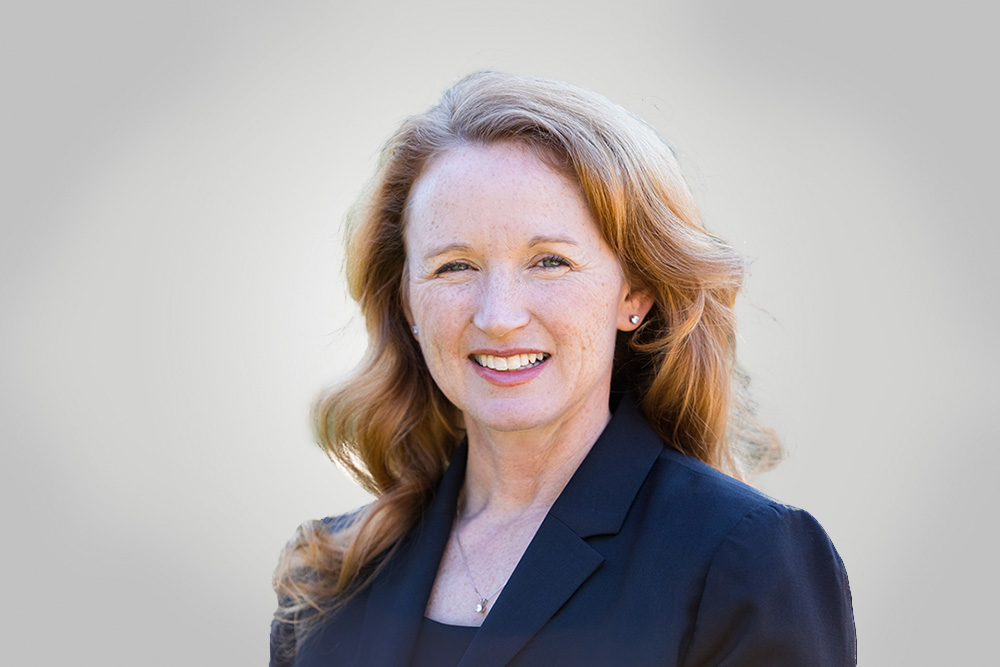In the latest installment of McChrystal Group’s Senior Advisor Interview Series, Erin McMahon discusses managing priorities, evolving and learning throughout her career, and building trust with her team to collaborate effectively.
In the following Q&A, McChrystal Group senior advisor Erin McMahon touches on the various roles and titles she has held throughout her career and how she focuses on developing her own leader characteristics to get the most out of her teams.
Q: How do you manage your flow of work and ensure you are focused on what matters most at any given time?
A: I first assume a basic understanding of what drives the team I am working with and identify the priorities and the mission so I can establish the boundaries of the work I’m responsible for. From there I get my lines of effort. Once I know their goals, I assess the environment by talking to my senior and mid-level leaders to learn what works, what doesn’t, and most importantly, the why. From there I can refine the line of effort and then establish the necessary internal controls to make those lines of effort effective. It’s also important to develop a communication strategy at the organizational as well as the individual and team levels to make sure everyone understands the function and priorities of the team and what is expected from them to get there. Finally, it’s an iterative process so be ready to flex and adapt as needed.
Q: At various times throughout your career, you’ve been tasked with training large groups of people on new developments or processes. What do you do to ensure that information is disseminated accurately across a team? And how do you follow up to ensure the information is being implemented properly?
A: Training groups is easy when you have clear communication, written guidance, and individual and team engagement. First, I understand what the objectives of the training are, I usually will develop a product to accompany the training with policy and processes incorporated, and then I discuss it with my leadership team to incorporate their feedback. Once my leaders finalize the training, we can discuss what our measure of effectiveness will be to ensure that we are on track. This gets back to those internal controls I mentioned earlier. Once we have a plan, I can communicate it to the entire team or allow one of my leaders to communicate the training. Finally, I maintain an open door and I’m a mover allowing people to reach me so we can have a one-on-one or small group dialog—making myself accessible is the key to gaining loyalty and trust within the office.
Q: What do you find to be best practices when collaborating with different areas within an organization to ensure everyone is on the same page? How do you go about striving for alignment on a given issue?
A: Collecting my team of experts across the enterprise is critical to developing a course of action that will align a team. I like to talk about what it takes to build trust within an organization—benevolence, competence, and integrity. Am I a person that is willing to listen, do I know what I’m talking about, and do I do what I say?
Problem-solving is the perfect opportunity to build trust because it allows a venue for personnel to participate in the process. Set goals for the meeting or planning session—why are we doing this and what do we hope to achieve, what’s the timeline for implementation, and who is making the decision to implement—where are the go and no go’s. I will have an idea as to how I think our organization should solve an issue, but my view will be based on my experience. What I need is for them to color it with their experience and expertise. Once we start to problem solve its important that we keep the dialogue moving forward—that doesn’t mean you can’t take breaks—sometimes breaks are important to gather information to inform the problem-solving that is occurring—with the input we can then make our course of action and present it to senior leaders for action. Active participation and trust will support the alignment I need in order to be successful.
Q: What characteristic of leadership is most important to you?
A: Adaptability is one of the most important leadership traits—I have seen leaders fail due to their rigidity. Leaders have to be willing to be open to learning, actively listen, problem solve, and flex with the situation to effectively lead a team. Leaders that are inflexible deprive themselves and their teams of reaching their full potential. By remaining adaptable leaders can solicit new ideas and perspectives which will endear them to their teams. Their teams are then encouraged to continue to bring great ideas to the table energizing them to think beyond the box and actively participate in an organization’s growth.




